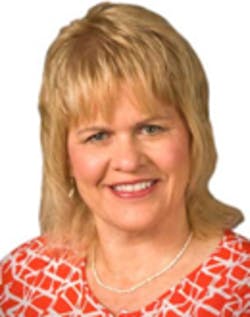Lots of factors contribute to an independent practice’s success, but nothing impacts the bottom line and ultimate solvency of a practice like billing. This was certainly true for Today Clinic, a family-owned practice that started in 2008 as an urgent care facility. Since then it has grown to include not just urgent care, but all types of primary care for patients of all ages. Today Clinic has continued to innovate in their practice and expand, reaching seven clinics with 15 providers, and has always been on the cutting edge in patient care.
That has not always been the case for their backend operations, however. When Scott Mayer, M.D., Director at Today Clinic, joined the practice in 2013, it was clear that there were billing and operational issues that needed to be addressed.
Today Clinic’s past challenges are shared by many independent practices and point to the need for billing best practices that provide a roadmap to a successful backend operation. Here are some solid practices every independent office needs to know.
Eligibility verification
Previously, Today Clinic was not verifying patient eligibility prior to the appointment. This directly impacted collections, unpaid claims, and every other aspect of billing. Best practices say that the eligibility of 100% of patients needs to be verified prior to the appointment and reverified regularly—at least every 30 days. Fortunately, electronic billing systems and software today can assist with eligibility verification and automatically reverify on a regular basis, so the staff doesn’t have to remember to click the button. These systems will automatically verify tomorrow’s appointments today, so there’s no last-minute scrambling.
Time of service collections
The potential to collect copays and fees from patients decreases with every additional day after the service. As a result, best practice says to collect at least 90% of copays at the time of service. In fact, it’s best to collect copays before the patient visits the doctor/provider. “How do you want to pay?” should become a regular part of the front desk interaction. Some software systems allow credit card payments to be entered directly into the system without data entry, reducing human error and the potential for embezzlement. Even better, saving a credit card on file proves the most reliable payment method.
TOS to billing
Today Clinic not only wasn’t collecting at time of service, they were having difficulty getting patient statements out the door—a frequent problem for independent practices and an issue that can put a practice out of business. Best practice says to get the bills out the door within four days of service and do whatever needs to be done to assure that happens. An automated billing system can help, as can a patient portal that makes it easy for patients to pay online. And just as bills should be sent immediately, the total number of bills should be limited. The cost of sending invoices to patients is considerable—in postage, materials, and especially time. No more than three bills should ever be sent to a patient, and each practice needs to have a procedure for how to treat unpaid invoices, whether through collection agencies or bad debt write-off.
Claims payment in <45 days
Best practice says that every provider should strive for 85-90% of claims being paid in 45 days or less. A number of factors help make this possible. Claim scrubbing should occur on 100% of the claims to review for diagnosis codes matching procedures, sufficient characters in the code, missing information like DOB, and many more issues.
Scrubbing is best accomplished using a combination of an automated system and the informed oversight of a billing and coding expert. Submitting claims electronically also can speed payments since humans are removed from the process, and a tracking code is a handy tool when dealing with insurance companies. Submitting clean claims rapidly by electronic means can sometimes get non-Medicare payments in as little as four days. Today Clinic used to have 65% of its claims paid in greater than 45 days. Now, using these best practices, that has dropped to 15%.
Denial of claims
Originally, Today Clinic tried to solve its billing challenges by outsourcing but chose a less-than-ideal provider. One problem arose when they discovered the billing company was not following up on denied claims at all. Denied claims should amount to no more than 3 to 5% of the total claims based on best practices, and whether in-house or outsourced, denied claims should be relentlessly pursued. Submitting clean claims to begin with, including all the right information, will go a long way toward eliminating denied claims.
Ultimately, Today Clinic found they needed to outsource their billing and collections to help them implement these best practices. For independent practices, outsourcing often is a good choice since these professionals have to stay informed on all the latest billing and claims requirements and have the experts on staff to assure billing and claims are occurring fast and accurately. Some practices with the budget to hire true experts will find in-house billing to be the best approach. Either way, like Today Clinic, they need to ensure that billing best practices are being followed.




